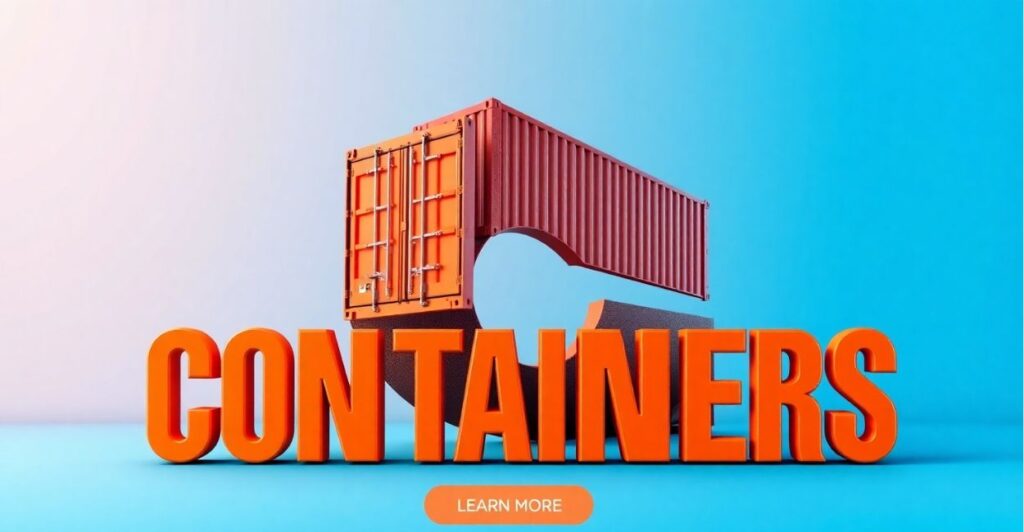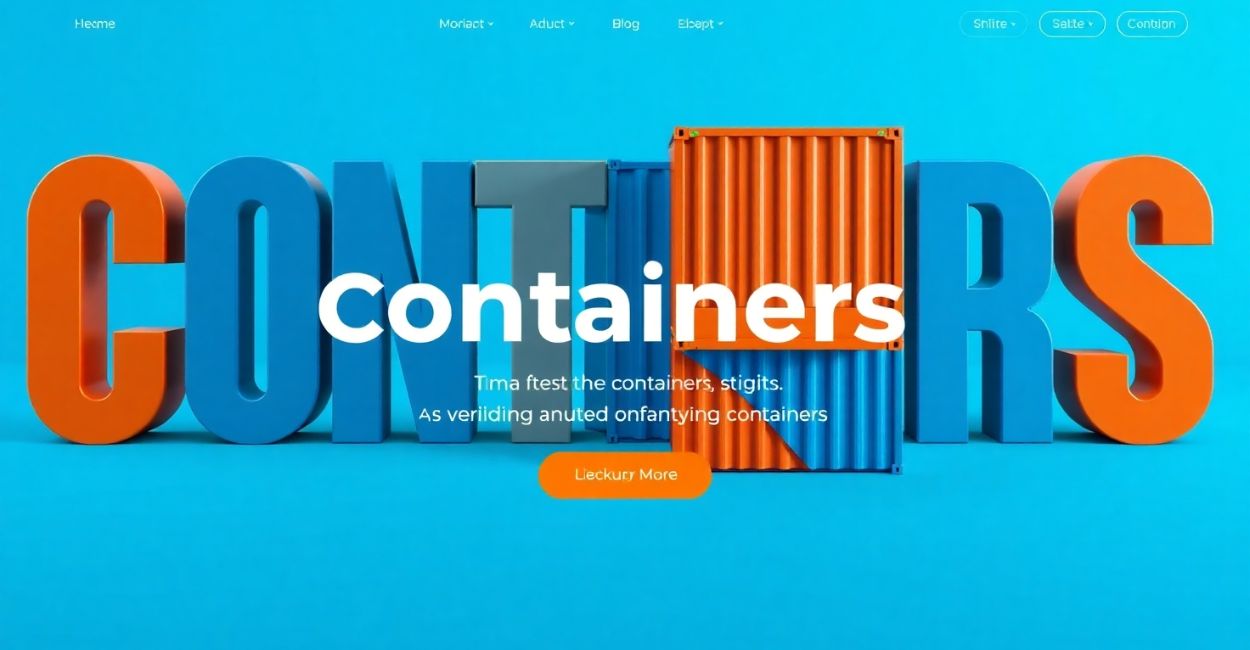Have you ever encountered the word “container” in your work or daily life and wondered how to abbreviate it quickly? Perhaps you’ve seen the abbreviation “Cont.” on shipping documents, in storage labels, or even in casual notes at home.
Whether you’re managing shipments, organizing items, or simply looking for ways to simplify your writing, understanding the abbreviation for “container” can save you valuable time and space.
In this article, we will explore the abbreviation for “container,” the meaning of the term, and how it’s used in different contexts. From logistics to everyday scenarios, you’ll gain a comprehensive understanding of the term and when to use the abbreviation “Cont.” So, let’s dive in!
What is the Abbreviation for Container?
The abbreviation for “container” is “Cont.” This shortened form is widely used across different industries, especially where space is limited and clarity is crucial.
Whether you’re labeling boxes, tracking shipments, or organizing your personal space, “Cont.” allows you to convey the concept of a container in a concise manner.
Examples of “Cont.” in Action
To make it clearer, here are some common examples of how “Cont.” is used in different scenarios:
- In Logistics and Shipping:
- “Cont. #5478 has been shipped to New York.”
- “The container arrived at the port at 3 PM.”
- In Personal Organization:
- “I need to organize my clothes into the Cont. in the attic.”
- “The holiday decorations go in the Cont. under the stairs.”
- In Inventory Management:
- “The warehouse staff will sort the items in each Cont. by category.”
- “Cont. #1223 contains electronics, please handle with care.”
In each case, using “Cont.” allows for quick communication, particularly when you’re working with limited space, such as on shipping labels or inventory lists.
The Full Meaning of “Container”
Before diving into how we use abbreviations, let’s first explore the full meaning of the word “container” itself. A container, in its simplest form, refers to an object used to hold, store, or transport something.
It can range from something small and simple, like a jar or box, to large, industrial-sized shipping containers used for transporting goods across oceans.
Different Types of Containers
The concept of a container can be broken down into different categories, each serving a unique purpose depending on the situation:
- Shipping Containers:
Large, standardized metal boxes used to transport goods across long distances via ships, trucks, or trains. These containers are typically either 20 feet or 40 feet long and can hold anything from clothing to electronics or machinery. - Storage Containers:
These include boxes, bins, and other types of storage units used in both households and businesses to organize items. A storage container can be as simple as a plastic tub or as elaborate as a climate-controlled storage unit for valuable items. - Everyday Containers:
From lunchboxes to jars, containers in daily life help us store food, liquids, or other items. A container in this context is anything that holds something else.
Practical Examples:
- Shipping Containers:
“The shipping container was loaded onto the vessel at 6 AM.” - Storage Containers:
“Place the winter coats in the plastic container under the bed for storage.” - Everyday Containers:
“I used a small container to store my leftover soup in the fridge.”
Why Do We Use the Abbreviation “Cont.”?
Using abbreviations like “Cont.” helps us save time and space, especially in industries or scenarios where speed is essential. In logistics, for instance, managing shipments efficiently is a top priority, and any way to streamline communication is valuable.
Benefits of Using “Cont.” in Shipping and Logistics
- Space Efficiency:
On shipping forms, manifest documents, and warehouse labels, space is often limited. Abbreviating “container” to “Cont.” saves space while maintaining clarity. This is especially useful in environments that require fast-paced processing and high volumes of goods. - Faster Communication:
In environments like warehouses or shipping yards, where speed is key, abbreviations allow workers to quickly reference containers without taking up too much time or energy in writing. A quick “Cont.” makes the process faster without losing meaning. - Consistency:
In the world of shipping, consistency is important. Everyone across the industry is familiar with common abbreviations, including “Cont.” This ensures that everyone is on the same page and can easily understand each other’s communication, no matter where in the world they are working.
Pronunciation of “Container” and “Cont.”

Pronunciation plays an important role when discussing terms like “container.” Let’s take a quick look at how to pronounce both the full word and the abbreviation.
- Container:
The word “container” is pronounced as /kənˈteɪnər/ — think of it as “kuhn-TAY-ner” with the emphasis on the second syllable. This makes it easy to say once you remember where the stress falls. - Cont. (Abbreviation):
As the abbreviation for “container,” “Cont.” is pronounced just like the full word, but with a shorter sound. You say it like “Cont” with the final “t” sound being soft, similar to saying “container” without finishing the word.
When to Use “Cont.” Versus “Container”
While the abbreviation “Cont.” is useful, there are times when it’s better to use the full word “container” instead. Understanding when to use each can help you communicate more effectively.
Use “Cont.” When:
- You Are Short on Space:
In shipping labels, inventory sheets, or casual notes where space is limited, using “Cont.” ensures you can fit more information in a smaller area. - In Informal Settings:
When writing personal notes or organizing your home, the abbreviation “Cont.” is perfectly acceptable, especially if you’re not concerned with formal clarity. - In Industry-Specific Documents:
In logistics, warehouses, and shipping companies, “Cont.” is the standard shorthand and is widely recognized by all industry professionals.
Use “Container” When:
- You Need Formality or Clarity:
If you’re writing official documents, contracts, or reports, it’s better to use “container” in full to ensure clarity. For instance, when creating presentations or reports for stakeholders, the complete term is more professional and easier to understand. - In Legal or Technical Contexts:
In any legal or technical documents, clarity is paramount. Using “container” in full avoids confusion, especially when the abbreviation might not be universally understood by all audiences.
Synonyms for “Container”
While “Cont.” is a convenient shorthand, there are many synonyms you can use depending on the context. These synonyms often add nuance to the meaning of the container you’re referring to.
- Box:
A generic term for any rectangular container, often used for packaging or storing goods. - Bin:
Typically used for storing items in bulk, whether in homes, offices, or warehouses. - Crate:
A large, often wooden container used to pack and ship goods, commonly used for heavy items. - Canister:
A smaller, often cylindrical container used for storing food, liquids, or other materials. - Vessel:
A term that usually refers to a container for liquids, such as a bottle or pot. - Jar:
A small, often glass container used to store items like food or spices.
The History of the Word “Container”
Did you know that the word “container” has an interesting history? It comes from the Latin word continere, meaning “to hold together” or “to enclose.”

Over time, this evolved into the modern English word “container,” referring to any object used to hold or store things.
The term gained significant importance in the 20th century with the rise of containerization — the process of using large standardized containers to transport goods efficiently across the globe.
This shift revolutionized international trade and logistics, making it easier and more affordable to ship goods worldwide. Today, containers are a cornerstone of the global economy.
Final Words
In conclusion, the abbreviation for “container” — “Cont.” — is a small but mighty term that plays an important role in communication, particularly in logistics, shipping, and organization. Whether you’re tracking a shipment, organizing your home, or working in a warehouse, knowing when and how to use this abbreviation can save time and make communication more efficient.
By understanding the meaning of “container,” recognizing when to use the abbreviation “Cont.,” and exploring the variety of synonyms and contexts, you are now better equipped to handle the term in both professional and personal settings. Remember, though, that it’s always essential to consider the context in which you’re communicating, choosing between the full word “container” and the abbreviation “Cont.” based on the situation.









